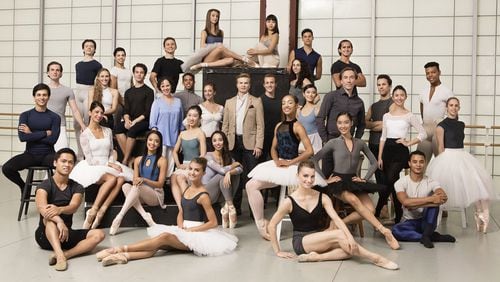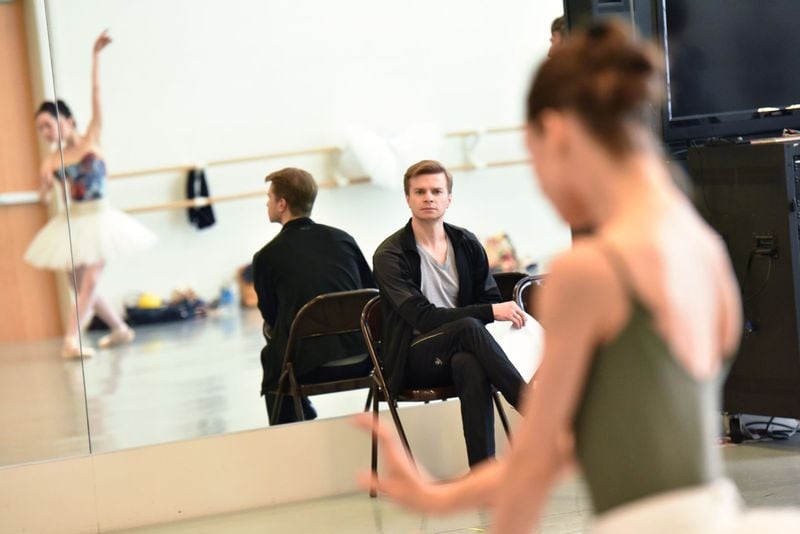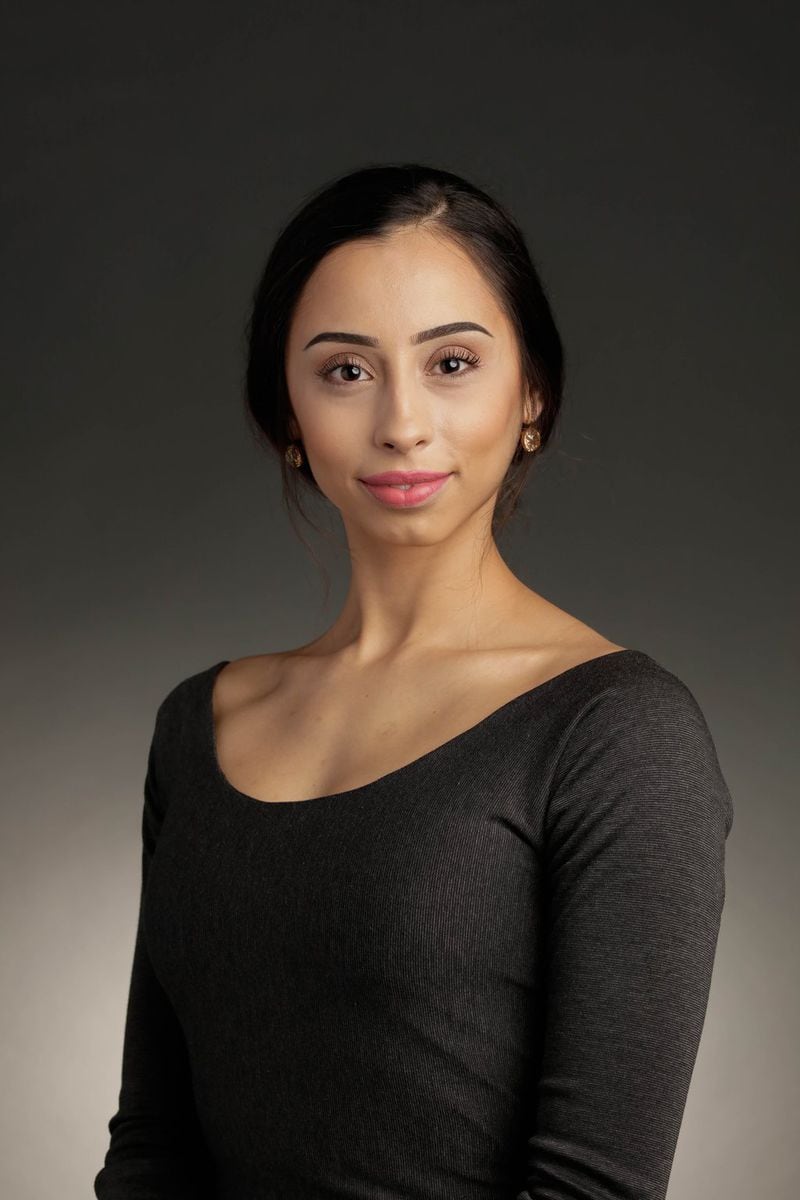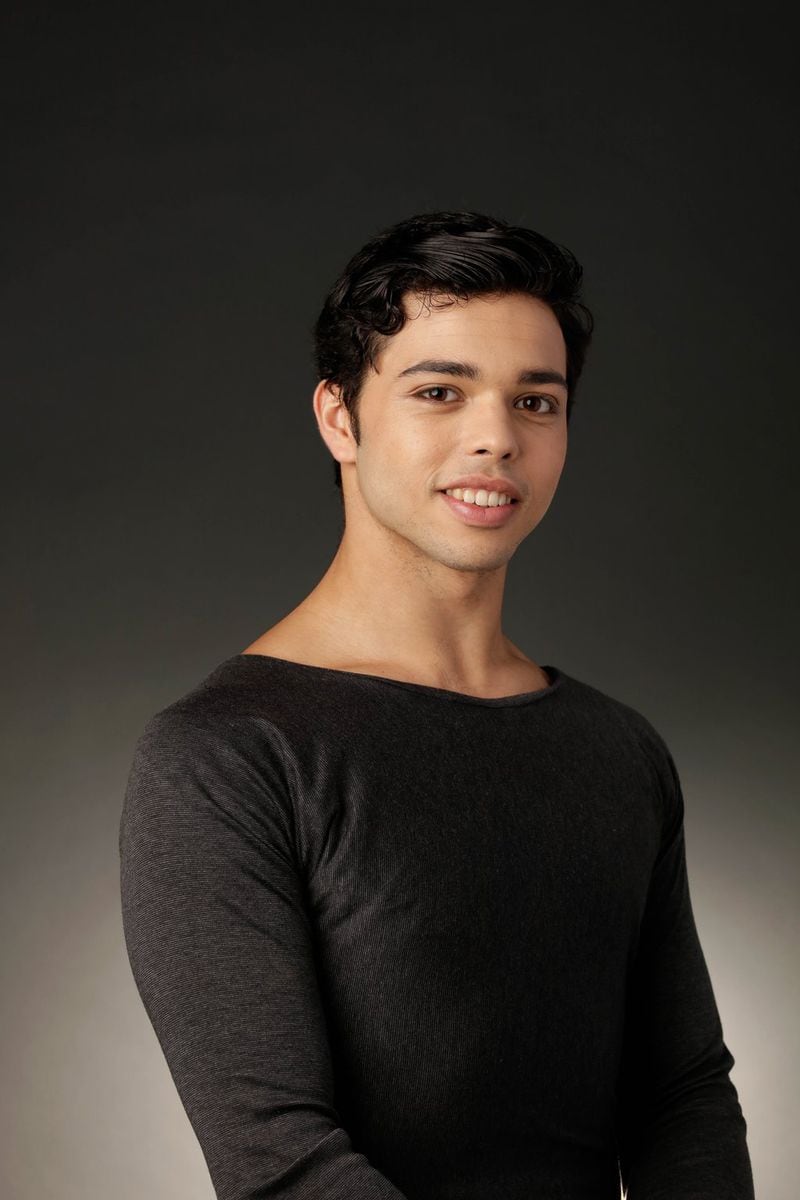Fourteen new recruits — nearly half of Atlanta Ballet's company of 25 full members and six apprentices — will debut this season during Atlanta Ballet's final run of John McFall's "The Nutcracker." They are bringing a palpable new energy into the studio, after a major turnover last spring.
During a recent morning company class, a few veterans moved with serene musicality, a calm undercurrent to younger dancers who showed varying degrees of struggle and ease, shyness and confidence.
Jessica Assef, a tall, slender dancer with steely resolve and six o’clock extensions, launched into a double pirouette. She overshot the turn and hopped slightly off-kilter, but caught her balance with a broad arabesque.
Atlanta Ballet artistic director Gennadi Nedvigin suggested dancers lead into the pirouette with the opposite rib cage. Next time around, Assef flowed easily through turn and arabesque, her arms and legs stronger, freer and more expansive.
“So much better,” Nedvigin said to the dancers. “I can see your muscles, instead of dropping in and out, you are constantly in control of your body.”
Last season, when Nedvigin stepped to the barre to teach his first company class as artistic director, he had no idea that the company would look so different now. “I don’t know who was more nervous, me or the dancers,” he said. Nerves aside, he remained true to his vision to build a repertoire of classical, neoclassical and contemporary ballets. To do this, he needed dancers with a classical technical base and the ability to adapt to a wide range of styles.
Credit: Hyosub Shin
Credit: Hyosub Shin
Nedvigin drew from his background as a student at the Bolshoi Ballet school and stellar career at San Francisco Ballet. He implemented the Vaganova training system at Atlanta Ballet, where teaching styles had been more diversely creative under previous artistic director John McFall.
Nedvigin also made plans to expand the company. Word got out. Hundreds of inquiries came in, and Nedvigin invited a few to audition. Last February, he gave a New York audition, which attracted about 180 dancers. Nedvigin then joined about a dozen artistic directors in Barcelona, Spain, for a Grand Audition, where dancers could vie for spots in several ballet companies during one weekend.
Nedvigin worked with Sharon Story, dean of the Atlanta Ballet Centre for Dance Education, to form a training ensemble to groom young dancers for the company.
With the season under way in Atlanta, Nedvigin could see that some dancers lacked the specific skills needed to perform the repertoire’s wide-ranging styles at Nedvigin’s standard of excellence.
At the same time, some company members, shaped by McFall's more creative approach, began to realize their personal aesthetics did not mesh with Nedvigin's vision. A few sought jobs elsewhere, and several dancers were secretly forming their own troupe.
Nedvigin stayed true to his plans, and by the time news broke that 13 dancers would depart, five voluntarily and eight not hired back, Nedvigin had dancers waiting in the wings. He chose more than half of the new dancers from those he invited to audition with the company in Atlanta.
“I would see them in class, I would see what they’re capable of. How much they try, how much they push, and then we have a conversation and we understand each other, that we are looking for the same thing. We are mutually interested,” he said, “in what we can offer to each other.”
Assef knew, after one class, that Nedvigin’s teaching would make her a better dancer. She had trained with noted teacher Jolles Salles, attended the Orlando Ballet School on a Youth America Grand Prix scholarship, and eventually joined the company. After seven years there, Assef felt ready to pursue new challenges, and Atlanta Ballet’s repertoire offered her classical works that would help develop her artistry. Russian training was a good fit for her tall, willowy body type. Even Nedvigin’s taste in contemporary works melded with her talents.
“She catches your eye,” Nedvigin said of Assef’s potential. “She’s a beautiful, tall dancer, with the grace and amplitude of movement I’m looking for.”
Sergio Masero-Olarte, a native of Madrid, always loved the ballet “Don Quixote.” While on scholarship at San Francisco Ballet School, he watched Nedvigin perform frequently as a principal dancer there. Masero-Olarte admired Nedvigin’s ease and natural coordination. He hoped to emulate Nedvigin.
Masero-Olarte was dancing and choreographing with Ballet Memphis when he heard of Nedvigin's move to Atlanta Ballet. Seeking to dance more classical repertoire, Masero-Olarte auditioned. After class, they discovered mutual interests and similar work ethics. When Nedvigin told Masero-Olarte the next season would feature "Don Quixote," the young Spaniard was ready to pack his bags. Later in the conversation, Masero-Olarte said, Nedvigin offered him a contract on the spot.
Masero-Olarte has good training, a special flair, professional dance experience and a desire to explore different styles of choreography, Nedvigin said. “He’s just the perfect combination.”
A year ago, Nedvigin didn’t foresee that so many dancers would leave after one season. But he’s learned to accept whatever happens, and to remain true to his vision for what is best for the organization. Critics and audiences praised much of his first season’s programming, a sign that the vision is working, he said. “We’re moving in the right direction now, with stronger forces, more energy, more enthusiasm.”
IN OTHER NEWS:









